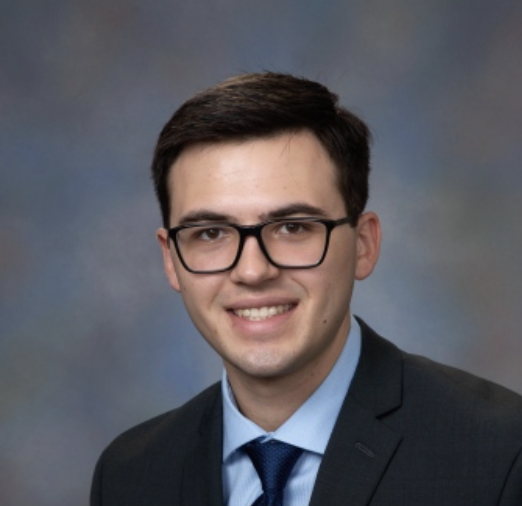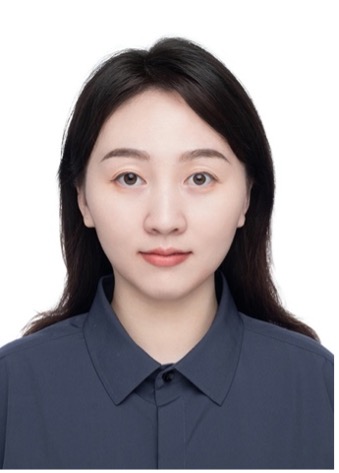Talk 1 on Relevant Topic in Your Field
Published:
This is a description of your talk, which is a markdown files that can be all markdown-ified like any other post. Yay markdown!
Published:
This is a description of your talk, which is a markdown files that can be all markdown-ified like any other post. Yay markdown!
Published:
This is a description of your conference proceedings talk, note the different field in type. You can put anything in this field.
The group led and partcipated in a number of high-profile research projects funded by federal and local agencies, including USDOT Federal Highway Administration, Federal Transit Administration, USDOE, National Science Foundation, National Institutes of Health, Maryland Department of Transportation, and Maryland DOT State Highway Administration.
The team receives funding to develop a software application for transit agencies to generate tradable credits from emission reductions and social equity improvements. These emission and equity credits will be integrated into a mobile app that uses real-time data to determine their credit and value. The project will incentivize individuals to use mass transit and ultimately provide transit agencies additional revenue through partnerships and innovative financing practices.
Under the unprecedented SARS-CoV-2 pandemic, a major mitigation effort has focused on non-pharmaceutical interventions, including masking requirements, shelter-in-place orders, border closures, school restrictions, and business interruptions. The effectiveness of these interventions for infection control depends on adherence as well as their specific impact: for instance, travel restrictions may reduce the geographic dispersion of infections but do not interrupt local transmission. Therefore, mobility-based analytics that link human movement patterns to spatiotemporal trends in SARS-CoV-2 are required to understand whether the interventions exhibit their intended effect. We aim to build a publicly accessible mobility data platform and to investigate the relationship between human movement patterns and SARS-CoV-2 transmission through three specific aims: (1) Fuse, integrate, and analyze passively collected mobile device locations and public health records for the two application areas: Nigeria and South Africa; (2) Design and reliably train an agent-based mobility model for multimodal and multi-dimensional travel behavior (i.e., across all modes, destinations, departure times, and routes) before and during the SARS-CoV-2 pandemic; and (3) Develop an epidemiological layer for the agent-based mobility model and empirically calibrate the model to spatiotemporal data of mobility and public health records.
This novel NIH Pillar-1 “Health Effects Research” investigates the influence of climate change and extreme weather events on SARS-CoV-2 related health outcomes. The study has the spatial and temporal focus on extreme weather events in Nigeria and South Africa, explicitly quantifying the direct health impacts from climate change on the weather-impacted areas, indirect impacts caused by induced human behavior changes and on different population groups, and the spillover influences on connected neighboring regions. The proposed study innovatively applies techniques from statistics, data sciences, computer science, and public health to deliver actionable results as well as data and new measurements to understand the health effects of extreme climate events on SARS-CoV-2 outcomes.
Published in Transportation Science, 2018
This paper extends the dynamically formulated hidden Markov models to a high-order hidden Markov model (HO-HMM) formulation. In the HO-HMM, the Markovian assumption that the future states (interpreted as the states of preferences or attitudes) depend only on the current state has been relaxed. Instead, the HO-HMM generalizes that the future states will depend on a number of states occurring beforehand.
Recommended citation: Xiong et. al., (2018). "A high-order hidden Markov model and its applications for dynamic car ownership analysis." Transportation Science. 52 (6), 1365-1375. https://pubsonline.informs.org/doi/abs/10.1287/trsc.2017.0792
Published in Transportation Research Part C: Emerging Technologies, 2020
This paper studied an integrated incentivization mechanism that realisticly models subjects` behavioral response to different types of incentives and optimizes the incentive allocation with a control optimizer.
Recommended citation: Xiong et al., (2010). "An integrated and personalized traveler information and incentive scheme for energy efficient mobility systems." Transportation Research Part C: Emerging Technologies. 113, 57-73. https://www.sciencedirect.com/science/article/pii/S0968090X18317364
Published in Proceedings of National Academy of Sciences (PNAS), 2020
U.S. county level human mobility were measured from individual level passively collected data and linked to a panel data model for modeling and predicting SARS-CoV-2 pandemic in the U.S.
Recommended citation: Xiong, et. al., (2020). "Mobile device data reveal the dynamics in a positive relationship between human mobility and COVID-19 infections." Proceedings of National Academy of Sciences (PNAS). 117 (44) 27087-27089. https://www.pnas.org/doi/full/10.1073/pnas.2010836117
Workshop, University of Maryland, Department of Civil and Environmental Engineering, 2015
Contantly, I will bring new components into teaching, such as simulators, software packages, programming bootcamps, and so forth.
Guest Lecture/Co-Instructor, University of Maryland, Department of Civil and Environmental Engineering, 2018
While working as a research faculty, I was also engaged in teaching. During the era spent at UMD, I primarily explored offering guest lectures and co-instructing a few courses that I was specialized in, such as urban transportation planning.
Undergraduate/Graduate, Villanova University, Department of Civil and Environmental Engineering, 2022
I am teaching a series of undergraduate and graduate level courses in Transportation Engineering under CEE. Topics inlcude introduction to transportation, transportation planning and policy, system design, traffic simulation, transportation data analysis, statistical modeling, and so forth.
The group is filled with talented and enthusiastic researchers and Ph.D., M.S., Undergraduate, and High-School lads, who share happiness and tackle challenges together as brothers and sisters. A group photo with several current and previous team members at the 2023 Transportation Research Board (TRB) Annual Meeting. 
Dr. Wu joined the group in Spring 2023. Before joining Villanova University, Dr. Wu worked as postdoctoral researcher at University of Maryland and Arizonal State University. Dr. Wu received his Ph.D. in 2018 from Beijing Jiaotong Univeristy. He is specialized in Logistics, Materials, Supply Chain Management, and Railway Management. Dr. Wu authored/co-authored more than 30 peer-reviewed research articles on these topics and accumulated over 330 citations according to Google Scholar.
Weiyu received his B.S. in Mathematics and M.S. in Applied Statistics from Beijing Jiaotong University and Hong Kong Baptist University, respectively. He is currently a mid-career Ph.D. student working on transportation big data and data-driven methods. He is an enthusiastic tennis player in his extracurricular life. Expected graduation: 2025. 
Luke received his B.S. of Civil and Environmental Engineering from Rowan University in 2022. His research specialties included waste to energy biofuel production and pedestrian safety initiatives. He is currently working on his M.S. thesis in modeling human mobility via an agent-based approach (Expected graduation: 2024). 
Kevin earned his B.S. in Mathematics from Liberty University (Class of 2018) and then pursued an M.S. degree in Business Analytics from Fordham Univeristy (Class of 2020). He is currently enrolled as a Ph.D. student starting in Spring 2023. Expected graduation: TBD. 
Lele earned her Bachelor of Science in Environmental Science and Engineering from Yantai University in 2019 and received her Master of Science in Civil Engineering at the University of Macau in 2022. Having embarked on her doctoral journey in the summer of 2023, Lele possesses a keen interest in examining how climate change and extreme weather events impact health outcomes related to SARS-CoV-2. Expected graduation: TBD. 
Ruohan received her B. Eng. degree and M.Eng. degree in traffic and transportation from Lanzhou Jiaotong University, Lanzhou, China, in 2020 and 2023, respectively. She is currently enrolled as a Ph.D. student starting in fall 2023 and working on travel trajectory prediction and integrated transportation and traffic simulation. Her research interests include deep learning, transportation big data, and automated driving. Expected graduation: TBD. 